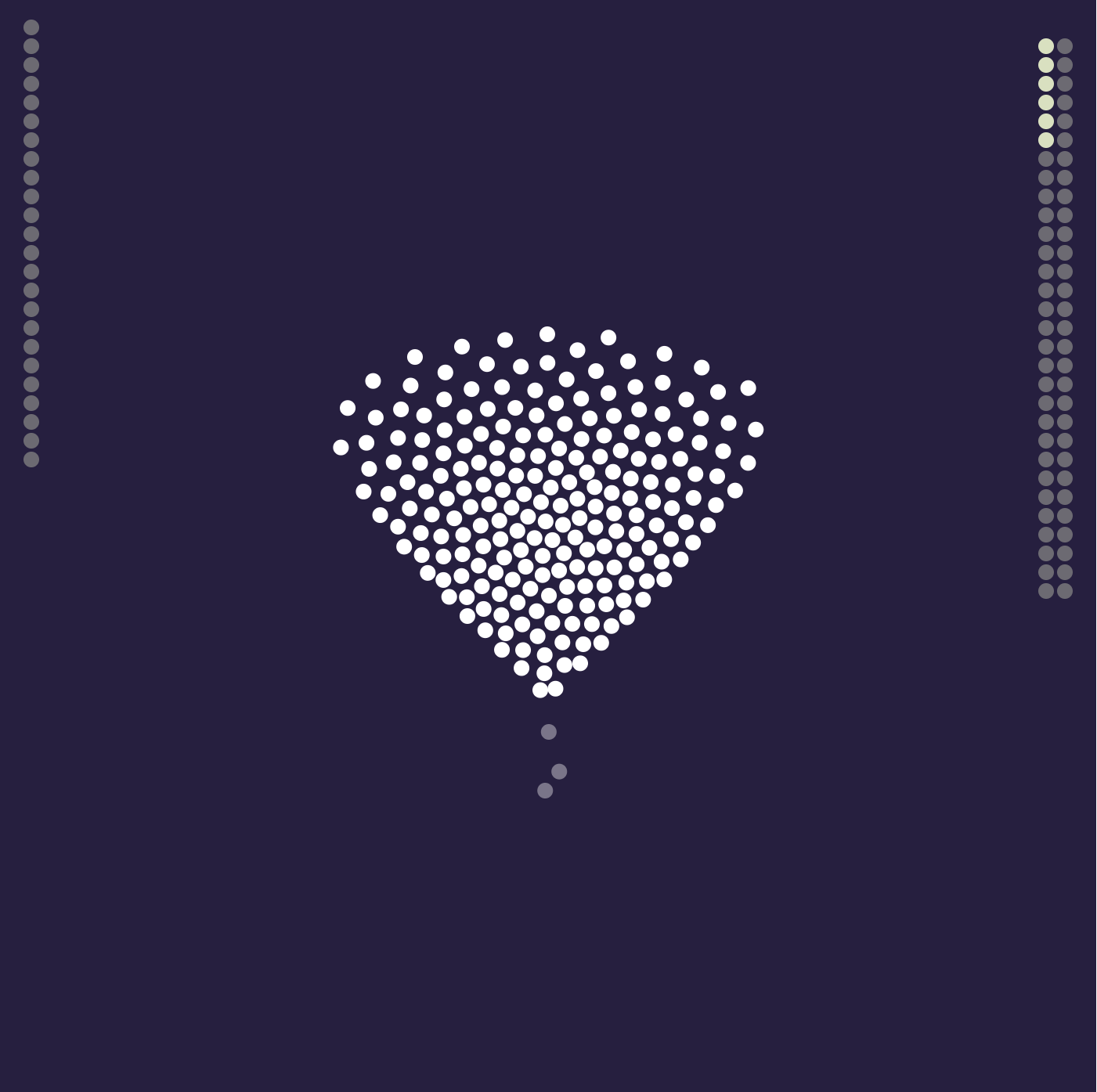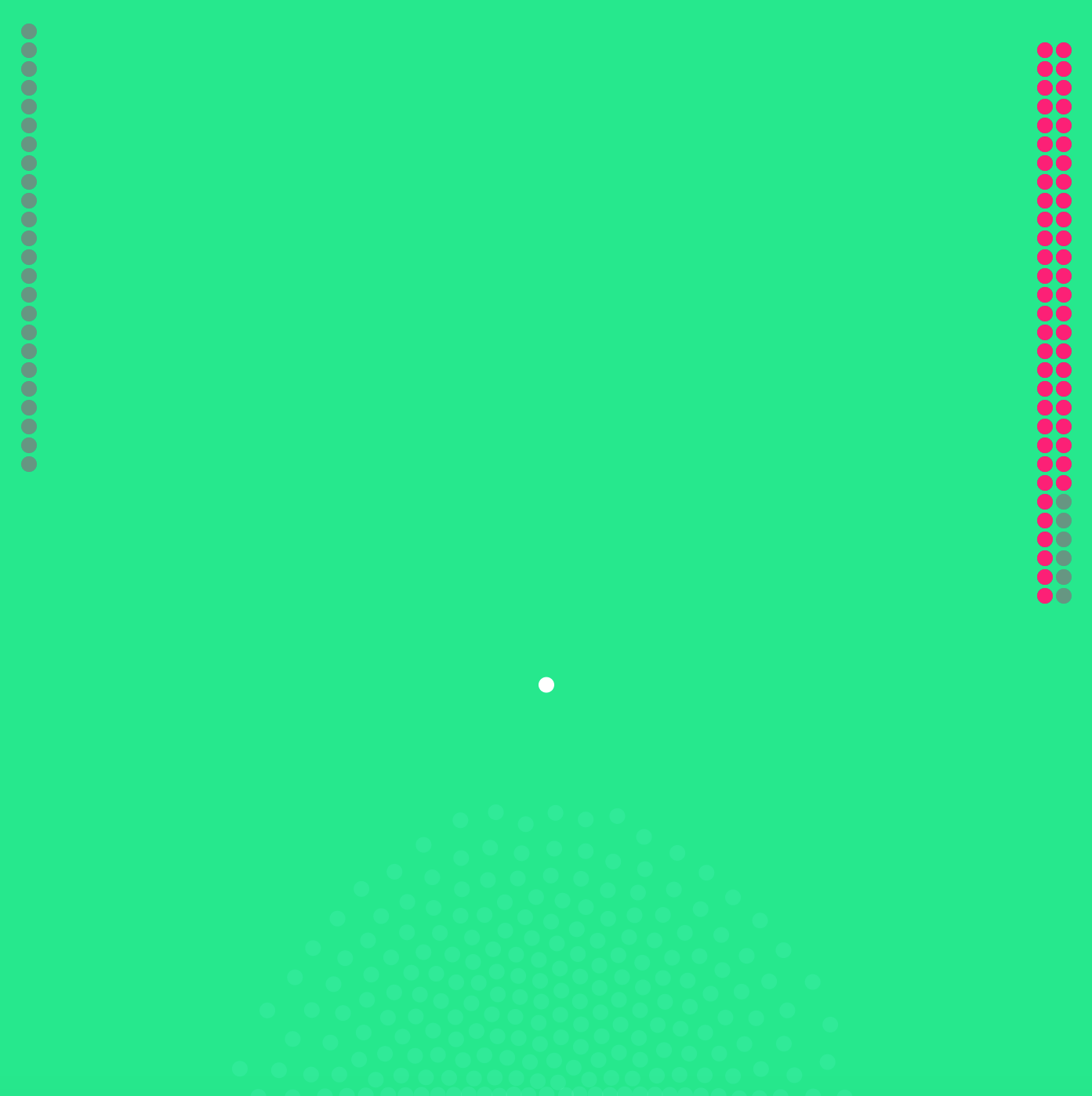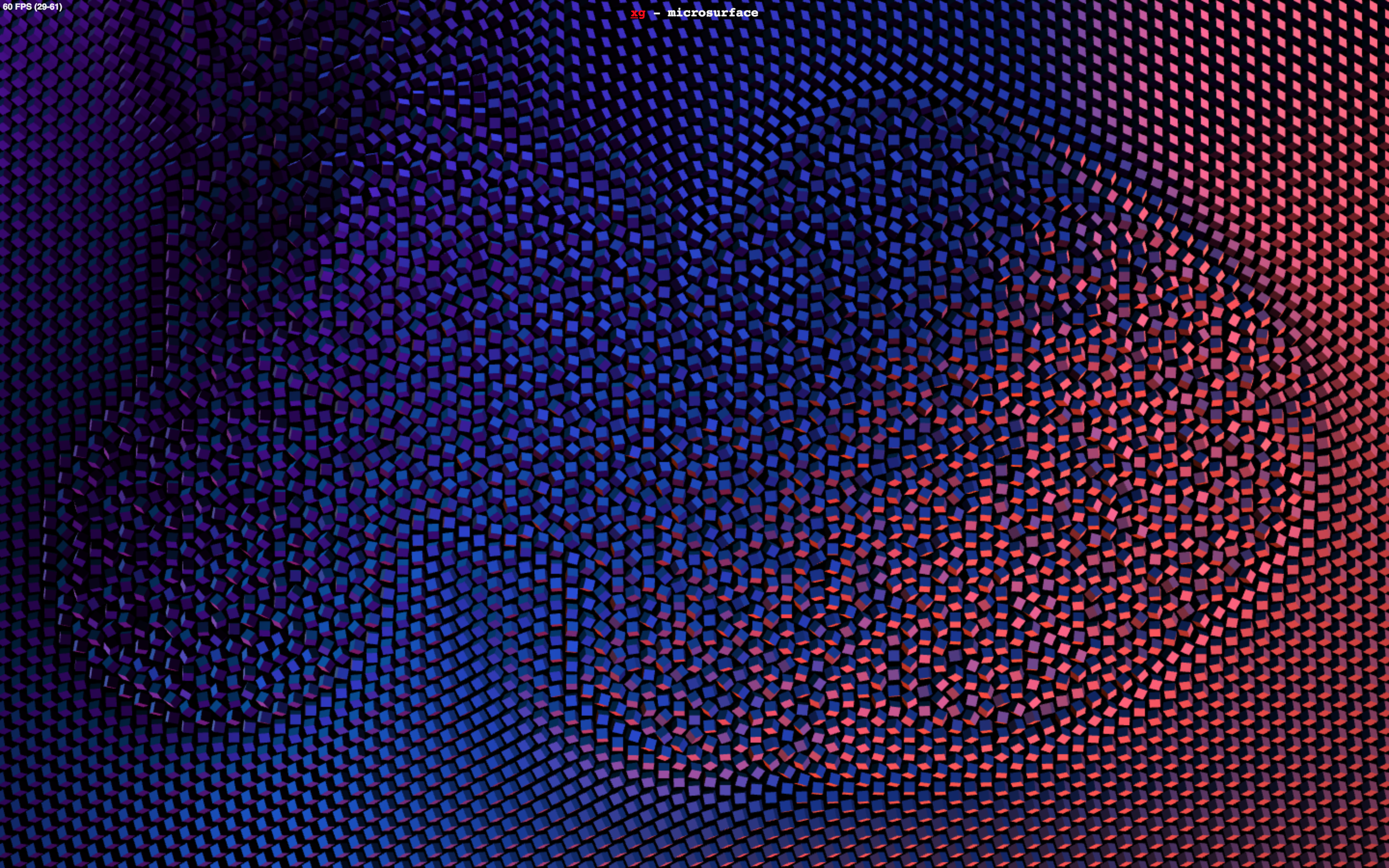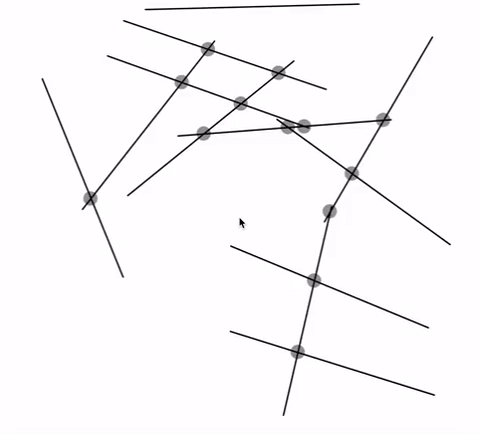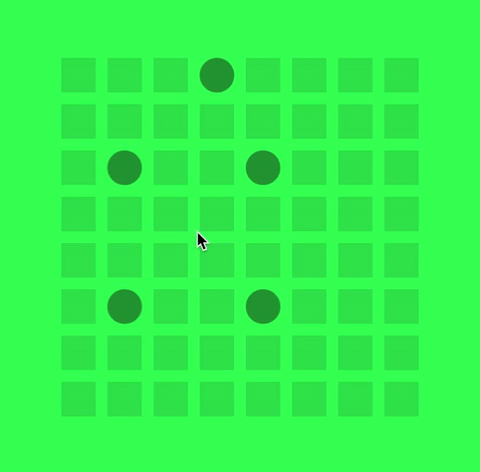var offset = 25;
var plugOffset = 10;
var cirlceDist = 15;
var miniFill = 170;
var correctnessIndex = 1;
var plugThickness = 15;
var plugTipThickness = 45;
var plugTipHeight = 25;
var miniSize = 450;
var particleSystem;
var voiceSystem;
var modes = ["off", "listening", "answering"];
var currMode = "off";
var speech;
var mic;
var scenarios = []
var nullScenario;
var currScenario;
var anotherDayOfSun;
var activate;
var selectAnswers;
var demi;
var instrumental;
var startTime;
var instructionsX = 50;
var instructionsY = 50;
var barrier = 450
var baselineSec = 0
var resetted = false;
var subjectiveMin = 0
var numActiveParticles = 220;
var r
var g
var b
function setup(){
angleMode(DEGREES);
createCanvas(700, 700);
particleSystem = new ParticleSystem();
particleSystem.reset();
baselineSec = second();
subjectiveMin = minute();
}
function draw(){
r = map(second()%60 - baselineSec, 0, 60, 0, 255);
g = map(subjectiveMin, 0, 60, 0, 255);
b = map(minute(), 0, 24, 0, 255);
print(second(), baselineSec)
print(second()%60 - baselineSec)
print("")
background(r, g, b);
currMode = "listening";
particleSystem.updateOpacity();
particleSystem.updateVelocities();
particleSystem.updatePosition();
particleSystem.draw();
// print(resetted)
if(second()%60 == baselineSec && resetted == false){
particleSystem.reset();
resetted = true;
subjectiveMin =(subjectiveMin + 1)%60
}
if(second() != baselineSec){
resetted = false;
}
drawHours();
drawMins();
}
function drawMins(){
for(i = 1; i <= 2; i++){
for(j = 1; j <= 30; j++){ if(i == 1){ minValue = j; }else{ minValue = j + 30; } if(subjectiveMin > minValue){
opacity = 255;
}else{
opacity = 100;
}
fill(255-r, 255-g, 255-b, opacity);
ellipse(width - 20 - 12*2+ 12*i, j*12 + 20, 10, 10);
//text(minValue, width - 20 - 12*2+ 12*i, (j-1)*12 + 20)
}
}
}
function drawHours(){
for(i = 0; i < 24; i++){ if(hour() > i){
opacity = 255;
}else{
opacity = 100;
}
fill(255-r, 255-g, 255-b, opacity);
ellipse(20, i*12 + 20, 10, 10);
}
}
//courtesy of Golan Levin (http://cmuems.com/2015c/november-4/)
function ParticleSystem(){
this.bigParticles = [];
this.myParticles = [];
this.nParticles = 300;
this.particleSize = 10;
this.isVisible = false;
this.opacity = 0;
this.reset = function(){
this.myParticles = [];
numActiveParticles = 220
for (var i = 0; i < this.nParticles; i++) {
var distFromCenter = random(0, miniSize/2);
var degree = random(0, 360);
var rx = cos(degree)*distFromCenter + width/2;
var ry = sin(degree)*distFromCenter;
this.myParticles[i] = new Particle(rx, ry, 10, random(.7, 1), true);
}
for(i = 0; i < 80; i+=2){
var x1 = width/2 + i*3 + 10;
var x2 = width/2 - i*3 - 10;
var y = -i*3 + barrier;
this.myParticles[i] = new Particle(x1, y, 10, random(.7, 1), false);
this.myParticles[i+1] = new Particle(x2, y, 10, random(.7, 1), false);
}
}
this.setForScenario = function(scenario){
if(this.bigParticles.length != scenario.possibleAnswers.length){
for(ansInd = 0; ansInd < scenario.possibleAnswers.length; ansInd++){
this.addToBigParticles(scenario.answerProbabilities[ansInd]*250);
}
}
for(ind = 0; ind < this.bigParticles.length; ind++){
if(ind == scenario.selectedInd){
this.bigParticles[ind].answering = true;
}else{
this.bigParticles[ind].answering = false;
}
}
}
this.addToBigParticles = function(goalSize){
index = floor(random(0, particleSystem.nParticles));
changingParticle = particleSystem.myParticles[index];
changingParticle.goalSize = goalSize;
particleSystem.bigParticles.push(changingParticle);
}
this.updateVelocities = function(){
var gravityForcex = 0;
var gravityForcey = -.17;
for (var i = 0; i < this.myParticles.length; i++) {
var ithParticle = this.myParticles[i];
var px = ithParticle.px;
var py = ithParticle.py;
ithParticle.addForce(gravityForcex, gravityForcey);
for (var j = 0; j < i; j++) { var jthParticle = this.myParticles[j]; var qx = jthParticle.px; var qy = jthParticle.py; var mutualAttractionAmount = (ithParticle.mass * jthParticle.mass)/2; var dx = px - qx; var dy = py - qy; var dh = sqrt(dx*dx + dy*dy); var componentInX = dx/dh; var componentInY = dy/dh; var proportionToDistanceSquared = 1.0/(dh*dh); var attractionForcex = mutualAttractionAmount * componentInX * proportionToDistanceSquared; var attractionForcey = mutualAttractionAmount * componentInY * proportionToDistanceSquared; if (dh > (ithParticle.mass + jthParticle.mass)/2 * 8) {
ithParticle.addForce( attractionForcex, attractionForcey); // add in forces
jthParticle.addForce(-attractionForcex, -attractionForcey); // add in forces
}else{
ithParticle.addForce( -attractionForcex, -attractionForcey); // add in forces
jthParticle.addForce(attractionForcex, attractionForcey); // add in forces
}
}
}
}
this.updatePosition = function(){
for (var i = 0; i < this.myParticles.length; i++) {
particle = this.myParticles[i];
particle.update();
}
}
this.draw = function(){
for (var i = 0; i < this.myParticles.length; i++) { particle = this.myParticles[i]; particle.render(this.opacity); } } this.updateOpacity = function(){ if(this.isVisible == false){ //if(this.opacity > 0){
this.opacity = this.opacity*.9 +0*.1;
//}
}else{
//if(this.opacity < 255){
this.opacity = this.opacity*.9 + 255*.1 ;
//}
}
}
}
//courtesy of Golan Levin (http://cmuems.com/2015c/november-4/)
function Particle(x, y, mass, personalOpacity, canMove){
this.personalOpacity = personalOpacity;
this.size = mass;
this.px= x;
this.py=y;
this.vx= 0;
this.vy=0;
this.damping = 0.96;
this.mass = (pow(mass, 3))/100;
this.bLimitVelocities=true;
this.bPeriodicBoundaries=false;
this.bElasticBoundaries=true;
this.goalSize = mass;
this.answering = false;
this.opacity = 0;
this.movable = canMove;
this.passedThrough = false;
this.addForce=function(fx,fy){
var ax=fx/this.mass*1.5;
var ay=fy/this.mass*1.5;
if(this.goalSize < 30){ this.vx+=ax; this.vy+=ay; }else{ this.vx+=ax*.1; this.vy+=ay*.1; } } this.update=function(){ this.vx*=this.damping; this.vy*=this.damping; this.limitVelocities(); this.handleBoundaries(); if(this.movable){ this.py-=this.vy; this.px-=this.vx; } // if(abs(this.goalSize-this.size) > 1){
// this.size = this.size*.9 + this.goalSize*.1;
// }
if(this.py > barrier){
if(this.passedThrough == false){
numActiveParticles -=1
}
this.passedThrough = true
}
}
this.limitVelocities=function(){
if(this.bLimitVelocities){
var speed=sqrt(this.vx*this.vx+this.vy*this.vy);
var maxSpeed=10;
if(speed>maxSpeed){
this.vx*=maxSpeed/speed;this.vy*=maxSpeed/speed;
}
}
}
this.inBounds=function(){
return(this.px<width&&this.px>0&&this.py<height&&this.py>0);
}
this.handleBoundaries=function(){
if(this.bPeriodicBoundaries){
if(this.px>width)
this.px-=width;
if(this.px<0) this.px+=width; if(this.py>height)
this.py-=height;
if(this.py<0) this.py+=height; }else if(this.bElasticBoundaries){ if(particle.py > height){
this.vy = this.vy*-1; // draw all particles
this.vx = this.vx*-1;
}
}
}
this.render=function(parentOpacity){
if(abs(this.goalSize-this.size) < 15 && this.goalSize < 20){
// this.opacity = 255 -getDist(this.px, this.py, width/2, height/2)*1.2 //+ this.size*this.size;
// this.opacity = this.opacity*this.personalOpacity
noStroke();
if(this.movable){
if(this.passedThrough == false){
opacity = 255;
}else{
opacity = map(numActiveParticles, 220, 0, 100, 25) //50;
}
fill(255, 255, 255, opacity);
ellipse(this.px,this.py,this.size,this.size);
}
}else{
if(this.answering){
numLayers = 5;
}else{
numLayers = 1;
}
for(j = 0; j < numLayers; j++){
diameter = this.size - j*5
r = lerp(255, 40, 1 - j*.1);
g = lerp(255, 140, 1 - j*.1);
b = lerp(255, 250, 1 - j*.1);
fill(r, g, b, 255*(parentOpacity/255));
ellipse(this.px,this.py,diameter,diameter);
}
}
}
}
function getDist(x1, y1, x2, y2){
return sqrt(pow(x1 - x2, 2) + pow(y1 - y2, 2))
}
//for testing
function mousePressed(){
}
function keyPressed(){
if(particleSystem.isVisible){
particleSystem.isVisible = false;
}else{
particleSystem.isVisible = true;
}
} |
